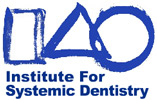At the Institute for Systemic Dentistry, we work with many patients who have missing teeth, who’ve had a tooth extracted or who need an extraction.
Patients who have missing teeth or painful cracked and loose teeth may be a candidate for a dental implant to prevent bite collapse or make chewing easier. In some cases, an implant can reduce the impact of missing teeth on the jaw, neck and spine, which can contribute to headaches, neck and back pain and sleeping disorders.
If you have missing teeth and are looking for a solution, we will conduct a dental exam. We will look at the health of the entire mouth and evaluate the implant site. We will determine how much bone is there — and if it is adequate enough for you to be a candidate for an implant.
What we need to consider is the likelihood of osseointegration. Osseointegration is the success with which an implant will adhere to the bone. Most dentists think that the implant is successful if it adheres to the bone. However, we take it a step further. We believe the implant is successful if it both adheres to the bone and is also healthy on a systemic level for our patient.
If patients don’t have enough bone, we’ll determine if they are candidates for bone augmentation or grafting. Bone augmentation is the creation of a new, living bone without infection or inflammation. Bone replacement aims to increase the amount of bone that is present so implants can be placed.
Painful, cracked or loose teeth present a more complex scenario, with the possibility of nerve degeneration, bone loss or fractures that compromise dental integrity.
In some cases, a patient is not a good candidate for an implant, and we will consider alternatives.
Here is a look at several common situations in which patients with cracked, damaged or missing teeth often consult with us about dental implants.
Extracted teeth, with bone graft
In this case, a tooth was extracted without complication, and a bone graft was performed in order to preserve the bone. This is the best-case scenario for a dental implant. It would be especially ideal if the implantation is performed within a year following extraction. Some patients who have gotten the bone graft still aren’t good candidates for implants, because they waited too long to start the implantation procedure.
In some cases, implants can be placed at the time the tooth is extracted. This can accelerate the treatment time by three to six months. When both procedures are performed together, only one healing period is required.
Sometimes, if an extraction is difficult and there is inflammation, excessive bone loss not allowing stabilization or poor clotting, a patient may have to wait to put in an implant.
Extracted teeth, without bone graft
Some patients have a difficult extraction with infection, and no bone graft was placed. Without a bone graft, there may be inadequate bone present for a dental implant. However, another procedure known as bone augmentation may restore lost bone as a preparation for dental implantation.
Treatment options:
If a patient is a suitable candidate for a dental implant, there are several types of implant restorations or prosthetics that become possible:
- Single implant, abutment, crown: Almost 80% of implant cases involve a tooth that is crowned. And 80% of the cases are considered “simple,” meaning uncomplicated. Complications such as inadequate bone, sinus position, or position of the nerve may require additional bone grafting.
- Multiple implants, abutment, bridge: A bridge is a set of connected crowns that sit on top of the implants. For example, if three teeth are missing, two implants can usually support a three-tooth bridge. What makes the procedure more complex is the position of the bone, sinus and nerves.
- All on 4/ all on 8/ full arch teeth (same-day teeth): When an entire arch (meaning the whole set of upper or lower teeth) needs replacement by a prosthesis, we use the terms “all on 4” or “all on 8” to refer to the number of implants needed to hold or stabilize the teeth. Ceramic implants generally require more implants than those made of metal. But the cost for either type will be similar. Before this procedure can be done, an implant assessment will need to be performed just to make sure one is a good candidate for a full-arch prosthesis.
- All on 4 / All on 8/ full-mouth teeth (same-day teeth): A full mouth is similar to a single arch, except here both upper and lower teeth are being replaced.

